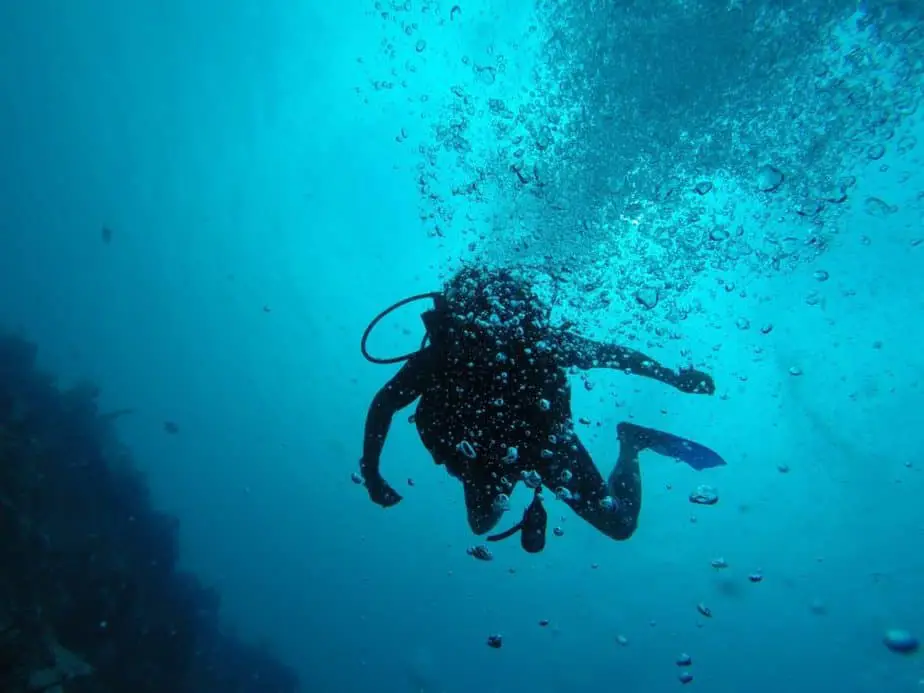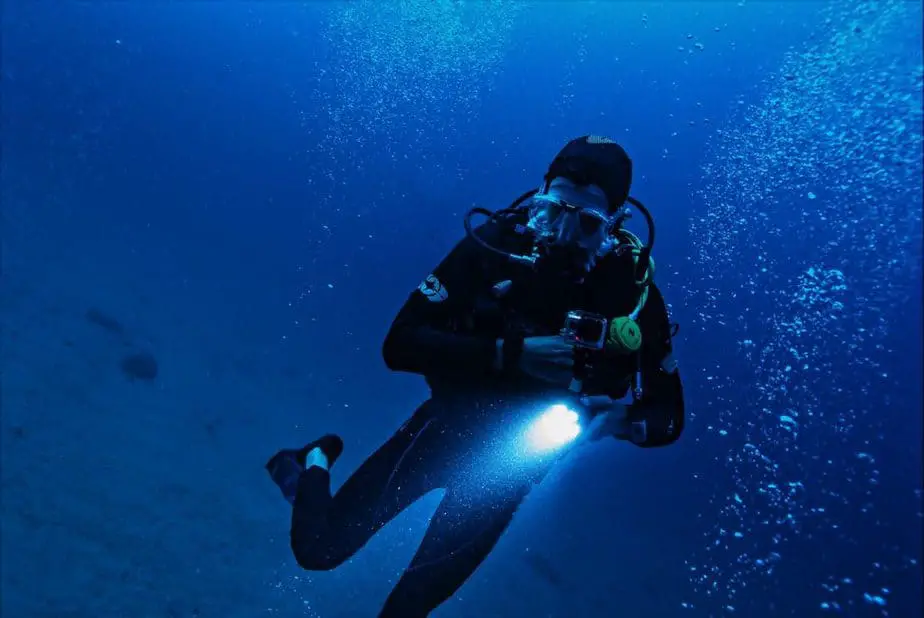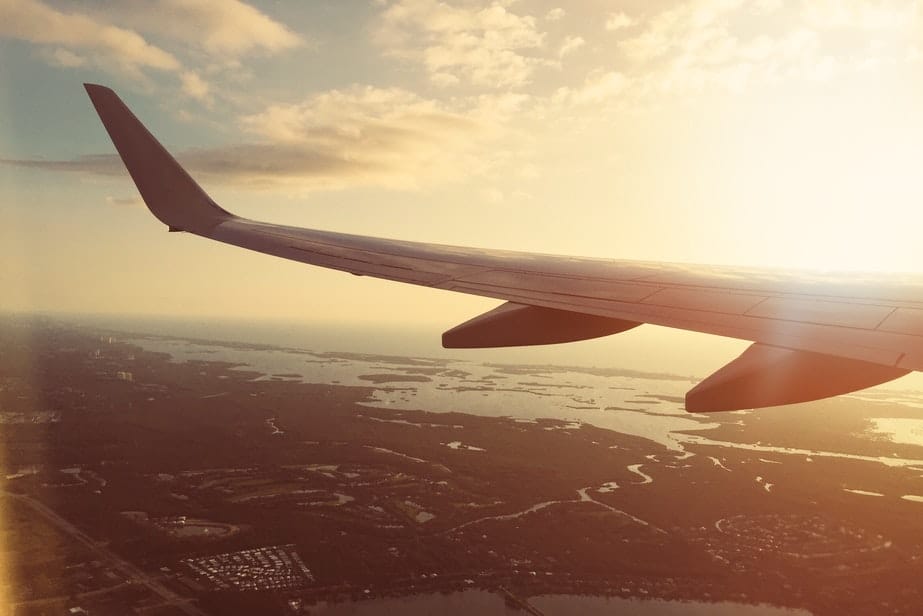You should be careful not to go on any flights or go to high altitudes shortly after diving. Exposure to high elevations can cause you to experience decompression sickness which scuba divers try to avoid underwater by ascending slowly and performing safety stops. However, DCS is something divers should worry about outside of the water as well. By following surface interval guidelines and careful planning, divers can avoid these risks and stay safe.
When planning a scuba diving trip, you must take into consideration how soon you’ll be flying after a diving session. Going to altitude after diving may be a problem because it may cause decompression sickness. So before you book your flights, consider how many dives you’ll be doing, the type of dives, and when you’ll finish your last dive for the trip. To be safe, it’s recommended you wait at least 24 hours after scuba diving before flying or going to high altitudes.
Scuba diving before flying
The most common scuba diving injury is Decompression Sickness, which is also known as The Bends or abbreviated to DCS. You will experience the effects of DCS if too much nitrogen is released from the body’s tissues on the ascent. You can experience this if you go scuba diving before flying.
During a dive, the increased pressure causes the air to compress and for more nitrogen to enter the tissues and bloodstream than usual. When the water pressure decreases (when the diver is ascending) then the nitrogen gets released from the tissues and bloodstream in the form of bubbles. Just think of a soda bottle and how fizzy it gets when you shake it, and that should give you an idea of what’s happening inside your body.
The release of nitrogen should be done slowly, otherwise the nitrogen bubbles will accumulate around the body and cause various side effects, such as stiff joints, headaches, nausea, incontinence, and in the most extreme cases, loss of consciousness and even death. By performing various decompression stops (if the no-decompression limit has been exceeded) and safety stops, the chance of getting decompression sickness on the ascent is drastically reduced.
With that said, divers are not free from danger yet. If they go to areas that have even lower pressure than sea level, such to the top of a mountain or on an aircraft, then it has a similar effect to divers who ascend rapidly without decompressing and they once again put themselves at risk of decompression sickness. For this reason, divers should give themselves ample time, e.g. 24 hours, to decompress after a scuba dive before boarding a flight.
Scuba diving after flying

Scuba diving shortly after getting off a flight is acceptable, but not the other way around. With that said, if you plan on diving after getting off a flight, you should still be cautious. For instance, being dehydrated can increase your chances of getting the bends.
Furthermore, if the flight was long enough, you will surely be fatigued. The Centers for Disease Control and Prevention (CDC) says that “being awake for at least 18 hours is the same as someone having a blood content (BAC) of 0.05%.” In other words, being sleep deprived is similar to being tipsy.
That might sound insignificant, but in another study, it was found that “significant impairment of diving performance [could be found] at BACs of 40 mg/dl (or 0.04 g/dl, or 0.04%) and higher.” This could cause divers to miss their decompression stops, safety stops, depth limits, ascent rate warnings and so on, putting them at increased risk of getting decompression sickness.
The same study came to the conclusion that “diving performances indicated that the divers were not aware of either their degraded performance or the increased risk of injury resulting from diving after drinking.” We recommend you read our article on the risks of drinking alcohol and scuba diving to learn more.
If you just got off a long flight, perhaps give yourself some time to rest before you head out to the waters. As long as you are well-hydrated and well-rested from sleeping on the flight, then you can safely go scuba diving.
What is decompression sickness?
Decompression sickness is a very serious issue that divers are at risk of experiencing and it can even be fatal in extreme cases. It can happen when there is too much nitrogen that escapes from the body’s tissues. When a diver breathes compressed air while underwater, their body absorbs more nitrogen than on the surface.
Recreational divers who stay in shallow waters (<10 meters, or 33 feet) and perform a 3-minute safety stop are much less likely to experience it. Similarly, DCS does not affect snorkelers because they not only stay in shallow waters but they don’t breathe compressed air either.
If you do not give the body ample time for the nitrogen to dissolve slowly and safely until it has returned to normal levels (via decompression and safety stops), then the nitrogen can become saturated in your bloodstream and tissues. A rapid ascent will cause nitrogen to get released in the form of bubbles that can accumulate in your joints, causing them to painfully bend and become immobile which is why people call it “the bends”.
How to avoid decompression sickness
Here’s how you can reduces your chances of getting bent:
Don’t stay at depths greater than 10 meters (33 feet) for too long. If you’re just a recreational diver, you may already be adhering to this. The water pressure doubles every 10 meters which further compresses the air at depth and causes your body to absorb more nitrogen into your bloodstream
Do not ascend any faster than 9 meters (30 feet) per minute. As you go from a high pressure area to a lower pressure area, you are “off-gassing” which means the excess nitrogen is released on each exhale. Slowly exposing your body to air in a lower pressure environment is the best way to avoid DCS. Carefully deflate your BCD on the ascent so you can control your speed and ascend slowly.

Pay attention to your dive computer. A dive computer will track your dive profile, which is how deep your dive was and how long you remained at that particular depth. The optimal dive is one where the diver descended to their planned depth, stayed within their air limits, and then ascended slowly to the surface, making sure to perform a safety stop at the end.
With the help of a dive computer, the ideal dive can more easily be attained. Using their sensors, they will monitor and assess each moment of the dive. They not only monitor your dive but also provide warnings to help you avoid decompression sickness. For instance, a dive computer will let you know when to perform decompression stops, and if you are ascending quickly.
Divers nowadays don’t really need to do much tracking nowadays and can focus on the dive. The dive computer will provide information such as how much longer they can safely remain at the depth. It will also guide you on your ascent so you’ll know when to stop and for how long. As long as you regularly check the dive computer and act accordingly, you can drastically decrease the chances of getting DCS.
Perform a safety stop at the end of each dive. It is highly recommended that divers perform a safety stop at the end of each dive. This means to remain at a depth of 5 meters for 3-5 minutes before finally surfacing. The sole purpose of this is to let nitrogen slowly get released and prevent decompression sickness. Even if you were diving in shallow water the whole time and aren’t required to do a safety stop, why take that risk? The final 5 meters of a dive are where the greatest change in pressure occurs, and where most divers will get decompression sickness.
Avoid activities after diving that will take you to high altitudes or areas of low pressure. Now that you know how decompression sickness occurs and how to avoid it underwater, you should also have an idea of how it happens above sea level and how to avoid it. After scuba diving, do not board a flight or go hiking up a mountain. If there is still excess nitrogen left in your system, going to a low pressure area will cause the nitrogen to rapidly escape and cause decompression sickness.
Frequently Asked Questions
Why is flying after diving dangerous?
It’s not safe to fly after diving because the change in pressure from sea level to above sea level can trigger DCS. In fact, you shouldn’t even go up a mountain because that is enough of an altitude change to be dangerous if you were scuba diving recently.
Divers who dived to deep depths, or went on multiple dives over the course of the day, will have more nitrogen in their blood than normal. This is due to the high pressure environment compressing the air which causes the body to absorb more nitrogen. The longer the diver stays in this environment, the more nitrogen is in their bloodstream.
Even if you performed all of the steps to safely ascend, your body will still be off-gassing for hours at the surface. In other words, not all of the excess nitrogen has dissolved yet. By going to a lower pressure environment, any remaining nitrogen bubbles will escape from the tissue and this can lead to pain, restricted movement, or even death.
How long do I have to wait to fly after diving?
If you’re unsure, a general rule of thumb is to wait 24 hours after diving before boarding a flight. You can board a flight even earlier than that based on several factors. Here are the minimum pre-flight surface intervals according to DAN:
- A single no decompression dive – wait 12 hours.
- Multiple no-decompression dives in one day – wait 18 hours.
- Multiple days in a row of diving, or a single decompression dive – wait 24 hours.
For instance, if you’ve only scuba dived once and did not exceed depths of 30 meters (100 feet), then it’s generally considered safe to board a flight after 12 hours after the last dive.
If you were on a liveaboard trip and dove 6-10 times over the course of many days, then you’ll need more time to off-gas. You should wait for 18 hours. However, exceeding 10 dives in a matter of days, or performing even a single decompression dive, should warrant a 24 hour waiting period just to be safe.
Keep in mind, these are just the minimum guidelines. If this sounds too complicated to keep track of, just wait at least 24 hours to fly.
What is happening to my body during the “no fly time”?
As you go from a high pressure environment to a low pressure environment, your body will continuously be off-gassing. This means every breath you take increases the amount of oxygen in your blood, and every exhalation decreases the excess nitrogen in your bloodstream. As long as you don’t return to the high pressure environment, your body will keep off-gassing on its own. Getting sufficient rest and staying active can speed up the process. Be patient and wait until your nitrogen levels return to normal before flying.
Summary
Flying, or going to high altitudes, is one of the worst things you can do after diving. The logic of why this occurs is the same as why ascending too quickly from depth to the surface can subject you to DCS. Basically, going from a higher pressure environment to a lower pressure one causes the nitrogen in the blood and tissues to get released too quickly.
The accumulation of the nitrogen bubbles in your joints, spine, and brain can cause a whole slew of problems, ranging from extreme discomfort to death. You should be doing everything in your power to avoid getting the bends. The entire reason dive computers exist is to help you avoid decompression sickness.
Track your dive profile using the dive computer and heed any warnings. Your dive computer may also let you know how long your “no fly time” is, meaning the minimum amount of time you should wait before boarding an aircraft. If you’re not sure, just wait a full 24 hours after diving before going above sea level. There should be no issue going on a dive after a flight; just make sure you’re hydrated and well-rested.

